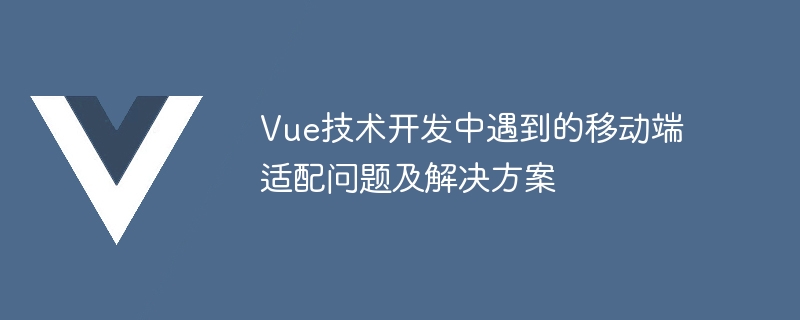

Mobile terminal adaptation problems and solutions encountered in Vue technology development
Foreword:
With the popularity of mobile devices and the rapid development of Internet applications , developing mobile applications has become a part that developers cannot ignore. In the actual development process, differences in screen size and resolution of mobile terminals will cause some adaptation problems for front-end developers. This article will focus on common mobile terminal adaptation issues and corresponding solutions in Vue technology development, and illustrate them with specific code examples.
1. Mobile terminal adaptation issues:
2. Solutions and code examples:
<style>
.container {
width: 100%;
height: 100%;
font-size: 16px;
}
.box {
width: 10rem;
height: 10rem;
background-color: #ccc;
margin: 0 auto;
}
</style>
<div class="container">
<div class="box"></div>
</div>In the above code, by setting the font size of the root element to 16px, and setting the size of the element based on this, you can achieve relative to Screen size adaptation.
import Vue from 'vue'
import VueRouter from 'vue-router'
Vue.use(VueRouter)
const routes = [
{ path: '/mobile', component: MobileComponent },
{ path: '/tablet', component: TabletComponent },
{ path: '/desktop', component: DesktopComponent }
]
const router = new VueRouter({
routes
})
new Vue({
router
}).$mount('#app')In the above code, three different routing paths and components are configured according to different screen sizes. Different components can be loaded by switching the routing. Implement responsive layout of the page.
<style>
.image {
background-image: url('image.jpg');
width: 100%;
padding-bottom: 75%;
}
@media screen and (min-width: 768px) {
.image {
background-image: url('image-large.jpg');
padding-bottom: 50%;
}
}
</style>
<div class="image"></div>In the above code, by using media queries, images of different resolutions are loaded according to different screen widths. Different pictures are displayed on the device.
Conclusion:
In the development of Vue technology, mobile terminal adaptation is an important issue. This article introduces solutions to mobile terminal adaptation problems and explains them with specific code examples. I hope this article can provide some reference and help for developers to solve mobile terminal adaptation problems in actual projects.
The above is the detailed content of Mobile terminal adaptation problems and solutions encountered in Vue technology development. For more information, please follow other related articles on the PHP Chinese website!




